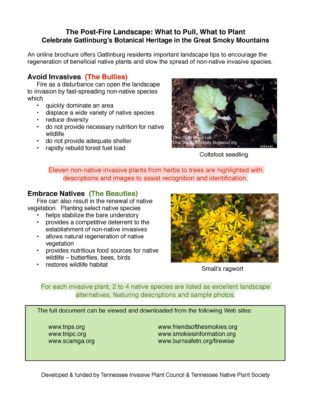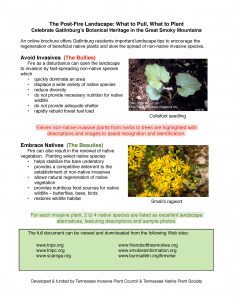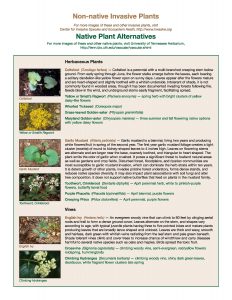Recovery after November’s tragic wildfires may be a slow and difficult process for many. Homes, businesses, and more importantly, lives were lost. But with the love and strength that have always defined our region, our communities will begin to heal and so too will our mountains.
The fires that ravaged Gatlinburg left many areas of bare vegetation. Monitoring burned forest land adjacent to the city for invasive species will be important to minimizing the spread of undesirable plants, as some harmful species can also invade intact forests and present a threat to unburned areas of Sevier County and Great Smoky Mountains National Park.
Allowing native plants time and space to naturally re-establish in burned areas gives the forest understory a better chance to defend against fast-growing, fast-spreading non-native species and the fuel-loading they represent.
So what can you do to help?
The Tennessee Invasive Plant Council developed two documents to help you choose which species to pull and which to plant at your home or business to give the Smokies’ natural residents a fighting chance. Native species listed in the following brochures help stabilize the bare understory to prevent landslides and help to restore wildlife habitats and important food sources.
Click below to check out these handy guides, or download them here and here. Then get to planting — spring is here!


